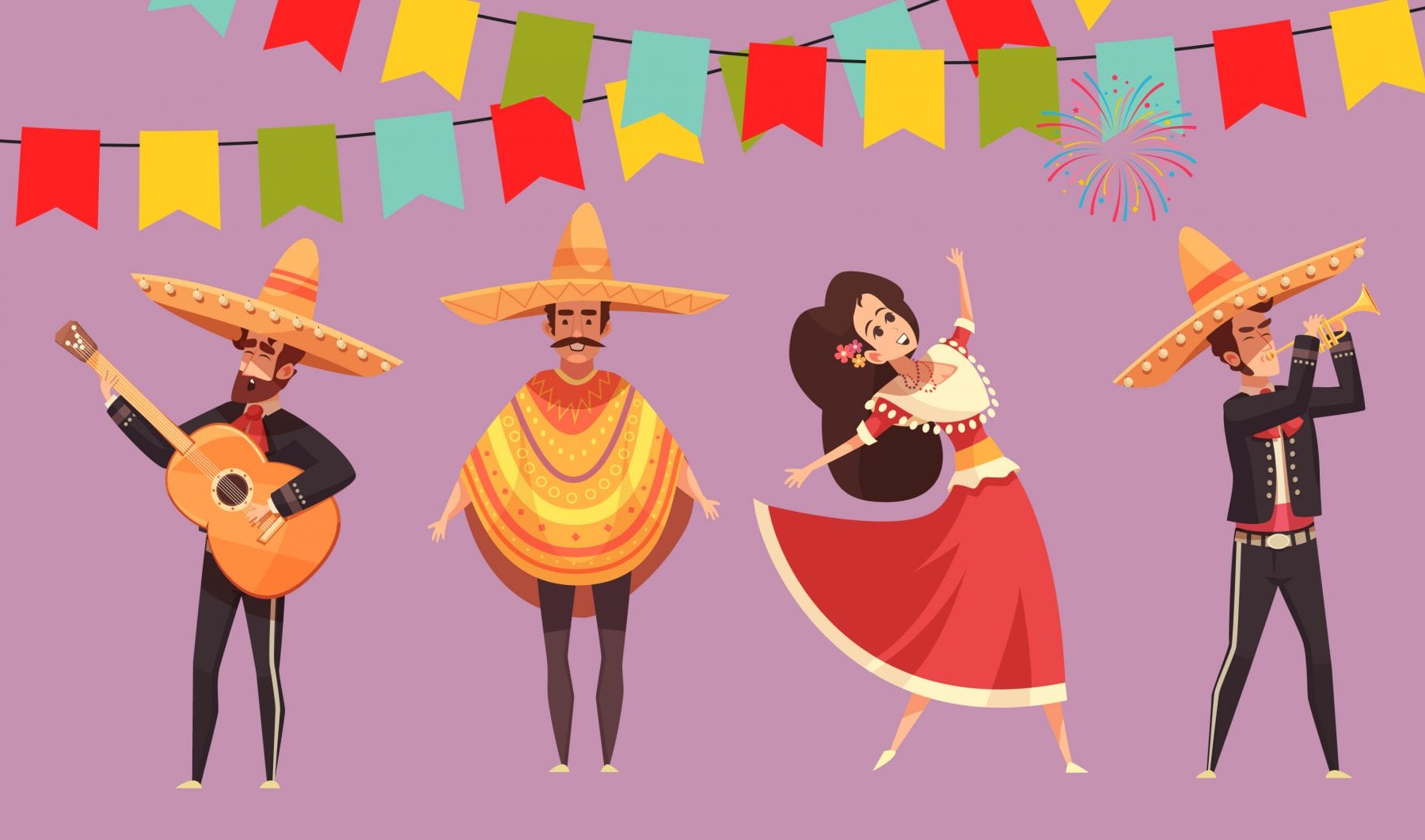
Facts About Latin America And Their Spanish Language Difference
We live in a world that has become smaller thanks to the fastest transportation facilities. Products that get produced in one part of the planet reach every country. Everyone, regardless of where they live, has access to everything. If you are an upper-middle-class consumer, you can probably name a dozen different products that are all produced in various countries of the world. But as consumers, we only focus on the products we get from these countries. There are a lot of positives about every state on the planet, but we have to look for those qualities if we wish to appreciate them.
Latin America
Everyone loves the dances that originated in this region. The cuisine of Latin Americans is loved everywhere in the world. But did you know it is also the most urbanized place in the world where more than 75% of its population living in the cities? Well, now, you do. The continent has 20 countries, one of which is Brazil that grows the largest amount of coffee beans in the world that all of us drink so lovingly. It is also home to various UNESCO World Heritage Sites. Some countries of the region are progressing quickly and will be among the developed nations in the near future.

Facts About Latin America:
Here are some interesting facts about this region that has twenty countries and fourteen territories:
- Latin American countries were colonized by Spaniards and the Portuguese, which left a lasting impression on their society. Even today, Spanish and Portuguese are the most spoken languages in the region.
- Colombia is known for producing the most emeralds in the world every year. The production percentage can range from 50% to 95%.
- One in ten of known and plenty of unknown species of wildlife can be found in the Amazon, which is spread across eight of the continent’s countries.
- If you wish to see alpacas in their natural habitat, then you must visit Peru. 80% of the total alpacas in the world can be found in Peru.
- The people of this region love to celebrate. If you wish to enjoy carnivals, then visit the region from late January to early March. Depending on the countries you pick, you can get to enjoy various kinds of festivals.
- If you love extra spice in your food, then be grateful for Latin America because that’s where the world’s hottest chilies come from.
- Fingerprinting helps a lot of law enforcement agencies around the world. But the credit for introducing this technique in criminal investigations goes to Argentina.
- The potatoes we love so much and can’t live without originated in Peru. When the Spaniards colonized Peru, potatoes were the first item they shipped back home.

The Spanish Language Differences:
Spanish is one of the most spoken languages on planet earth, but you won’t find most of its speakers in Spain. The majority of its speakers live in Latin America, the continent that the Spaniards colonized and introduced the natives to their vernacular. The Spaniards expected population of 20 independent states to adopt their language as it is. But cultures and languages always get influenced by other factors. The people of different areas combined their dialects with Spanish and created unique versions of the language. They started using that version with their fellow countrymen, and that became their Spanish. Today, almost all the states of the continent speak Spanish. But not only their language is different from that of present-day Spain but also from the vernacular of each other. There are different versions of the tongue in use today.
- One of the biggest differences among the Spanish of different states is that of pronunciation. People from a certain region will use their speech in a different way from their neighbors. It is just like English, which sounds different in the US than it does in England.
- The region is known as the home of indigenous languages, and they have affected Spanish too. The words for flora and fauna were taken directly from the vocabulary of such tongues. Although European speakers of Spanish have also adopted foreign words, they were taken from Caribbean languages.
- A lot of simple words have been turned into slang by Latin Americans. Someone unaware of the offensive nature of some slang words can be in big trouble if they use the wrong term in a sentence.
- Each country in the region has its own version of Spanish. Each of these versions has unique features that make them different from each other. The regional particularities also affect mutual intelligibility in some areas. Particularly the differences between any version of Latin American Spanish and European Spanish are far too many.
- Due to the influence of the US on the region, the Anglicisms are quite common there. You can’t find them in the European version of the vernacular.
The world is huge, but that hasn’t stopped its people from interacting with each other. And when they come into contact, they end up affecting each other. This influence often lasts a lifetime and has the power to change culture and languages. The Spanish language is spoken on different continents of the world, but it is impossible for it to remain pure. It has adjusted in different societies according to its surroundings. Had it not changed for various regions, people would not have picked it up as their next native language. Change has affected the lives of millions of Latin Americans.
Cultural Tapestry: Latin Diversity
Cultural identity in Latin America is a tapestry woven from diverse threads. Take Rio de Janeiro’s vibrant energy, for example, a far cry from the ancient Inca citadel of Machu Picchu. This rich diversity stems from a complex history. Spanish America, encompassing parts of Central and South America, was shaped by the Spanish crown’s arrival in the 15th century. While the Spanish language and some aspects of European culture became prevalent, they merged with the traditions of the existing Indigenous populations. This blend, along with influences from African slaves and later immigrants, defines Latino history and the cultural identities of American nations today. North American indigenous peoples also possess unique cultural identities, distinct from those in Latin America. The 19th century saw further cultural exchange as American literature and cuisines, brought by immigrants, began to leave their mark on Latin America. Understanding this interplay between cultures, from official languages like Spanish to the fusion of American cuisines, is a fascinating aspect of Latin culture studies offered by prestigious institutions like the University of Cambridge. The intricate tapestry of American culture weaves together influences from Latin America, Central America, and North America, blending indigenous traditions with the rich heritage of Hispanic people.
Cultural Fusion: America’s Complex Past
While the 15th and 16th centuries saw European languages establishing a foothold in the Americas, it was during the 19th century that literature in American nations truly flourished. In Mexico City, for instance, Sor Juana Inés de la Cruz, a 17th-century writer from Santo Domingo, challenged the authority figures of the Spanish crown through her brilliant works. This rich literary tradition is explored in detail by Cambridge University Press’s “Latin American History: A Cultural History” series, which delves into the 19th century alongside other periods. These resources, encompassing American and Caribbean Studies, are invaluable for those interested in the cultural development of the American nations, including the Caribbean, during a pivotal time. The United Nations also recognizes the importance of understanding this period, as it heavily influenced the relationship between Indigenous populations and the cultural touchstones, like Mexican cuisine, that define the region today.
North America, particularly Mexico City in the 18th century, offers a prime example of the complex interplay between indigenous and Hispanic cultures. While European languages and institutions arrived with the Spanish, they encountered vibrant indigenous populations with rich traditions. This fusion is evident in everything from major cities’ architecture to the foundation of Mexican cuisine, which blends indigenous ingredients and techniques with European influences. This complex history extends throughout the American nations, from Central America and South America with their large Hispanic populations to the United States, where indigenous people continue to fight for recognition of their culture. Understanding this interplay is essential to appreciating American culture as a whole. Latin America, encompassing Central and South America, shares a similar story. Santo Domingo, for instance, witnessed the arrival of Spanish authority figures and European languages, but these influences intertwined with the existing indigenous cultures. The resulting blend of traditions and identities continues to shape the region today, making Latin American history a fascinating lens through which to view American culture in its entirety.
Diverse Spanish Dialects
Latin America is home to a multitude of Spanish dialects, each with its unique characteristics and influences. Countries like Mexico, Argentina, and Chile have distinct accents, vocabulary, and expressions that set their Spanish apart from each other and from the Spanish spoken in Spain. For instance, Argentine Spanish, known as Rioplatense, features the use of “vos” instead of “tú” and has a distinctive intonation influenced by Italian immigrants. Understanding these regional differences is crucial for effective communication and cultural appreciation, as they reflect the rich linguistic diversity within Latin America.
Historical Influences on Language
The Spanish language in Latin America has been shaped by various historical influences. The Spanish conquest in the 16th century introduced the language to the Americas, but it quickly adapted to local conditions. Indigenous languages, such as Nahuatl in Mexico and Quechua in Peru, contributed words and expressions to the Spanish spoken in these regions. Additionally, the African slave trade brought new linguistic elements, especially in countries like Cuba and Brazil. These historical layers have created a unique blend of languages that is distinctly Latin American, showcasing the complex cultural and social history of the region.
Regional Vocabulary Variations
One of the most fascinating aspects of Spanish in Latin America is the regional vocabulary variations. Common words can have different meanings or be entirely different from one country to another. For example, the word “popcorn” is “palomitas” in Mexico, “pochoclo” in Argentina, and “canchita” in Peru. Similarly, a “bus” is called “camión” in Mexico, “colectivo” in Argentina, and “guagua” in Cuba. These variations add to the richness and diversity of the Spanish language in Latin America, reflecting the distinct cultural identities and everyday experiences of the people.
Festivals and Celebrations
Festivals and celebrations in Latin America are integral to its cultural identity. From Mexico’s Day of the Dead to Brazil’s Carnival, these events highlight the region’s joyous and communal spirit. These celebrations often involve elaborate costumes, music, dance, and food, reflecting the rich traditions passed down through generations. They are not only significant cultural practices but also vital tourist attractions, drawing visitors from around the world to experience the lively atmosphere and vibrant customs. These festivals serve as a powerful reminder of the region’s resilience and creativity, uniting communities in shared traditions and fostering a sense of pride and continuity.
Culinary Delights
Latin American cuisine is a testament to the region’s cultural diversity. Each country offers a distinct culinary experience, from Mexico’s spicy tacos and tamales to Argentina’s famed barbecued meats. Ingredients such as corn, beans, and chili peppers are staples in many dishes, while local specialties highlight the unique flavors of each area. The influence of indigenous cooking techniques combined with European culinary practices has created a rich tapestry of tastes that defines Latin American food culture. The vibrant and flavorful dishes are not only a delight to the palate but also a significant aspect of cultural expression and identity, offering insights into the history and social fabric of the region.
Music and Dance
Music and dance are at the heart of Latin American culture. Genres like salsa, samba, tango, and mariachi have gained international acclaim and are a source of pride for their countries of origin. These art forms are not only means of entertainment but also expressions of cultural identity and historical narratives. From the energetic rhythms of Brazil’s samba to the romantic movements of Argentina’s tango, Latin American music and dance captivate audiences worldwide. The fusion of indigenous, African, and European musical elements has created unique styles that resonate with people of all backgrounds, showcasing the region’s creativity and vitality.
Art and Literature
Latin American art and literature are deeply influenced by the region’s complex history and cultural dynamics. Renowned artists like Frida Kahlo and Diego Rivera, and literary giants like Gabriel García Márquez and Pablo Neruda, have left an indelible mark on global culture. Their works often explore themes of identity, politics, and social justice, reflecting the struggles and triumphs of Latin American societies. The region’s artistic and literary contributions continue to inspire and influence the world. The vibrant visual arts and compelling narratives offer profound insights into the human condition, capturing the essence of Latin America’s diverse and dynamic spirit.
Influence of Indigenous Languages
Indigenous languages have significantly influenced the Spanish spoken in Latin America. Words from indigenous languages are commonly used in everyday Spanish, especially in areas with a strong indigenous presence. In Mexico, for example, words like “tomate” (tomato), “chocolate,” and “aguacate” (avocado) are derived from Nahuatl. In the Andes, Quechua words like “papa” (potato) and “choclo” (corn) are integrated into the local Spanish dialect. This linguistic integration highlights the importance of indigenous cultures and their lasting impact on Latin American societies.
Learning Spanish in Latin America
For those interested in learning Spanish, understanding the regional differences in Latin American Spanish can be both challenging and rewarding. Language schools and programs across the region, from Mexico City to Buenos Aires, offer immersive experiences that expose students to the local dialects and cultural nuances. Learning Spanish in Latin America provides a deeper appreciation of the cultural and linguistic diversity of the region. Whether you are navigating the bustling markets of Central America or the vibrant streets of South America, mastering the local dialect can enhance your travel experiences and deepen your connection to the people and places you visit.
Frequently Asked Questions
What are the primary languages spoken in Latin America?
Spanish is the dominant language spoken throughout most of Latin America, with variations in dialects and accents across different countries. Additionally, Portuguese is the official language of Brazil, while indigenous languages are still spoken by various communities.
How does Spanish differ across Latin American countries?
While Spanish serves as the primary language in Latin America, there are notable differences in vocabulary, pronunciation, and grammar among Spanish-speaking countries. These differences can be attributed to historical, cultural, and geographical factors, resulting in distinct regional variations of the language.
What are some common Spanish language differences in Latin America?
Common differences in Spanish language usage across Latin America include vocabulary variations, such as different words for everyday items or expressions, as well as differences in pronunciation and grammar rules. These linguistic nuances reflect the diverse cultural heritage of each country.
How do these language differences impact communication in Latin America?
While Spanish speakers from different Latin American countries can generally understand each other, language variations may pose challenges in communication, especially for non-native speakers. However, these differences also enrich the linguistic landscape of the region and contribute to its cultural diversity.
Are there resources available for learning about Spanish language differences in Latin America?
Yes, various educational resources, including language textbooks, online courses, and language exchange programs, can help individuals learn about the differences in Spanish language usage across Latin America. Additionally, immersion experiences and interaction with native speakers can deepen understanding and appreciation for the linguistic diversity of the region.
